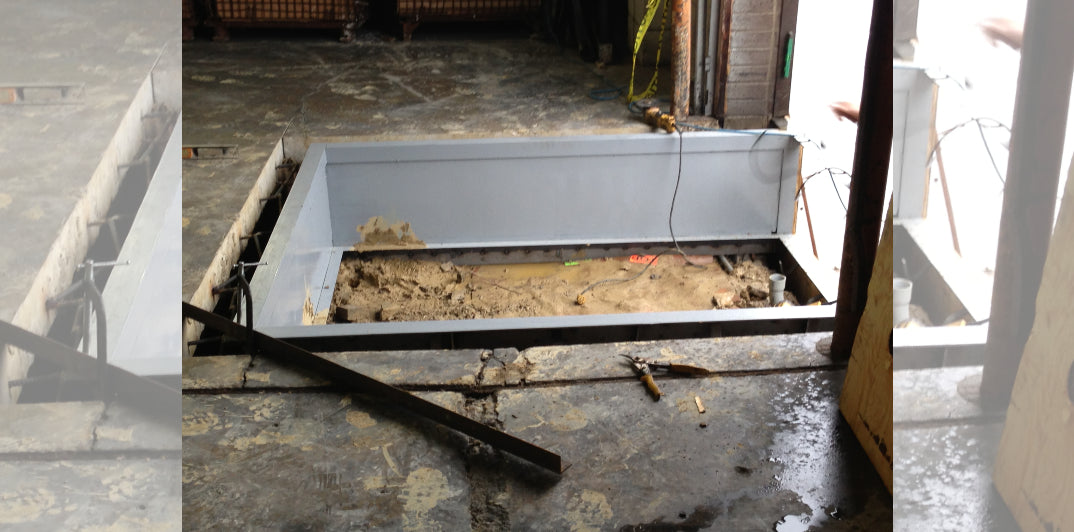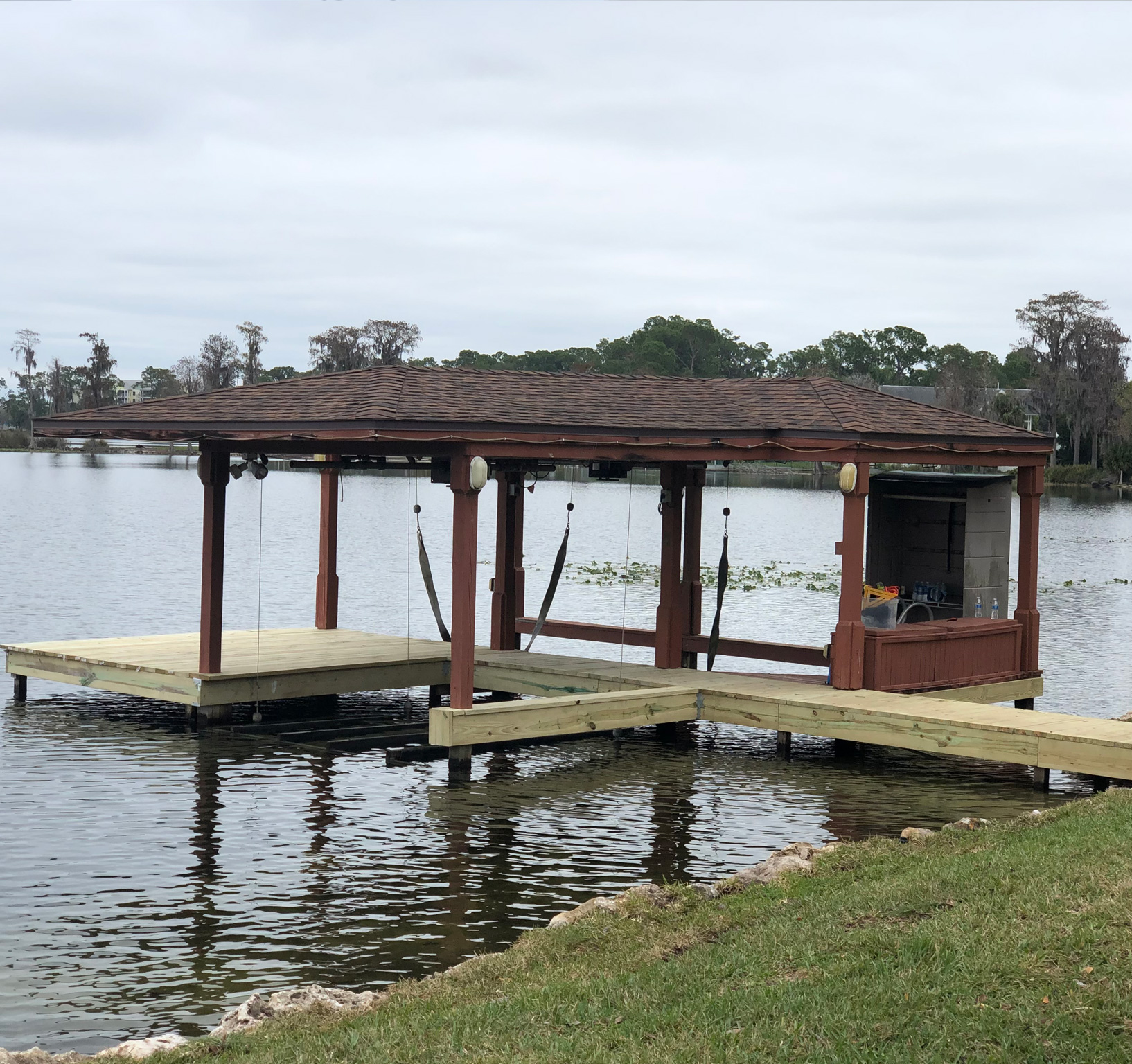Understanding the Costs Associated With Dock Repairs
Understanding the Costs Associated With Dock Repairs
Blog Article
Reliable Dock Fixing Techniques: Guaranteeing Structural Integrity
Guaranteeing the architectural stability of docks through reliable repair methods is extremely important for the longevity and safety and security of aquatic centers. Consequently, picking the ideal fixing materials, such as composite products and corrosion-resistant alloys, is essential for durability.
Assessing Dock Damage
Analyzing dock damages is a vital very first step in ensuring the structural stability and security of any kind of docking center. Key aspects to analyze include the dock's foundation, pilings, outdoor decking, and equipment (Dock Repairs).
Architectural engineers or qualified assessors normally execute these analyses utilizing specialized tools and methods. As an example, undersea inspections could employ finder tools or remotely ran lorries (ROVs) to identify submerged damages. Above water, visual examinations are matched by using dampness meters and other diagnostic devices to reveal underlying concerns not promptly visible to the naked eye.

Deciding On Repair Products
Picking the suitable repair service products is a critical action in the dock restoration process, one that straight influences the long life and performance of the repaired structure. Product choice have to be driven by aspects such as ecological conditions, load-bearing demands, and compatibility with existing dock components. Wood is a typical option for anchors due to its all-natural durability and aesthetic allure. Choosing the appropriate type of timber, such as pressure-treated lumber or naturally rot-resistant species like cedar or teak wood, is important to stand up to aquatic atmospheres.
In enhancement to wood, composite products are progressively prominent as a result of their sturdiness and reduced upkeep needs. Compounds, typically made from a mix of plastic and wood fibers, provide superb resistance to rot, insects, and UV damage. For steel docks, picking corrosion-resistant alloys such as galvanized steel or marine-grade aluminum is vital to stop rust and ensure structural integrity in saline water problems.
Epoxy materials and marine-grade sealers are crucial for repairing fractures and sealing joints, providing a waterproof barrier and boosting the dock's general stamina. By carefully selecting premium materials, dock fixings can accomplish durable outcomes, therefore securing versus future destruction and making sure risk-free, dependable usage.
Architectural Support Methods
Reliable structural support strategies are critical in making certain the security and longevity of dock repairs. This approach is specifically effective for docks subjected to hefty lots or harsh environmental conditions.
Another crucial method is the application of fiber-reinforced polymers (FRP) These products supply high strength-to-weight ratios and exceptional resistance to corrosion, making them perfect for enhancing concrete or wooden docks. FRP can be applied in sheets or strips and bound with epoxy resins to improve architectural integrity.
Supporting and anchoring systems also play an important function in architectural reinforcement. Cross-bracing, using steel or wooden beams, can combat lateral forces, lowering persuading and movement. Securing systems, such as helical piers or driven heaps, offer a stable foundation by moving tons to deeper, much more stable dirt layers.
Last but not least, the integration of load-distribution plates can aid distribute weight a lot more equally across the dock's surface, minimizing localized tension factors. These methods jointly guarantee that docks continue to be safe and robust, capable of holding up against the roughness of their functional environment.
Advanced Fixing Approaches

Another advanced method includes underwater welding, which enables fixings to be performed without the demand to dewater the area. This technique is particularly advantageous for dealing link with architectural problems in immersed dock elements, ensuring marginal disturbance to procedures. Improved welding methods, combined with robotic systems, deliver precision and integrity, thereby prolonging the life-span of the dock.
Additionally, cathodic protection systems are applied to protect against deterioration in metal dock structures. By using sacrificial anodes or satisfied present systems, these techniques effectively alleviate the electrochemical procedures that result in product wear and tear.
Lastly, progressed tracking technologies, such as structural health tracking (SHM) systems, supply real-time data on the condition of dock structures. These systems make it possible for aggressive maintenance and timely treatments, eventually making certain the long-term structural stability of the dock.
Upkeep and Prevention
Upkeep and prevention are basic concepts that underpin the durability and safety and security of dock structures. Normal inspections are vital, permitting for early discovery of deterioration, possible weak points, and ecological effects. A proactive method, including regular checks for rust, rot, and structural image source shifts, minimizes pricey repair work and extends the dock's operational life.
Preventive steps ought to consist of applying protective coverings to metal parts to defend against rust and using treated timber to stand up to degeneration. In addition, making sure correct drain and air flow can stop water buildup, which is an usual cause of architectural destruction. Integrating top quality materials and adhering to supplier guidelines throughout construction and fixing phases additionally play vital roles in improving sturdiness.

Educating personnel in dock maintenance finest methods makes sure regular application of safety nets. Leveraging technical advances, such as drones for inspections and sensing units for real-time monitoring, can additionally enhance upkeep initiatives. By focusing on upkeep and avoidance, dock owners can make sure architectural integrity, operational safety, and cost-effective management over the dock's life-span.
Conclusion
In final thought, keeping the architectural integrity of aquatic centers necessitates extensive dock repair techniques. Comprehensive examinations utilizing advanced devices discover both noticeable and concealed damages, while the selection of ideal repair work materials improves toughness. Executing structural reinforcement approaches addresses tension points effectively. Advanced repair service strategies, coupled with routine upkeep methods, make certain the dock continues to be safe and operational under varied environmental conditions. Embracing these methods considerably extends the life-span and performance of marine infrastructure.
Ensuring the architectural integrity of docks with efficient repair methods is critical for the durability and safety of marine centers.Choosing the appropriate fixing products is a critical step in the dock repair procedure, one that straight influences the long life and performance of the fixed additional hints framework.Effective architectural support strategies are important in guaranteeing the security and long life of dock repair work. By focusing on upkeep and avoidance, dock owners can guarantee architectural honesty, functional safety and security, and economical monitoring over the dock's lifespan.
In conclusion, maintaining the structural integrity of marine facilities necessitates extensive dock repair work methods.
Report this page